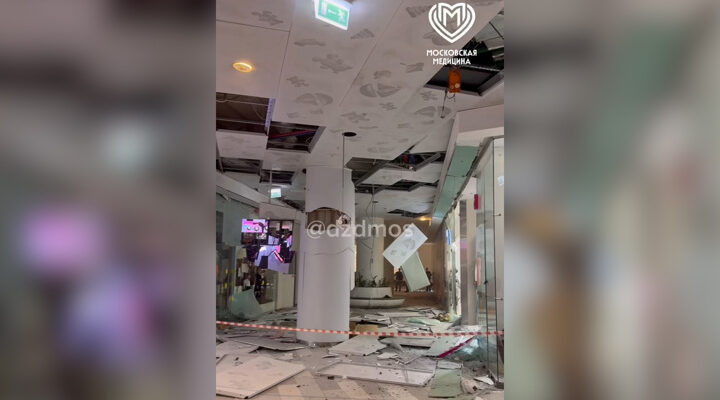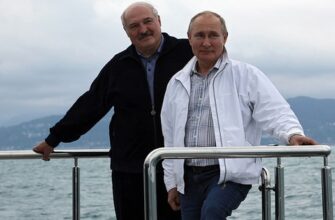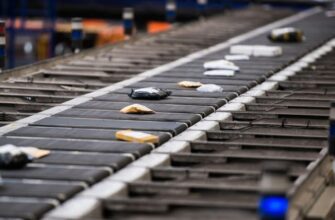A sudden incident at the iconic Central Children`s Store on Lubyanka Square in Moscow sent shockwaves through the city, leaving one person dead and three injured. Initially attributed to a technical malfunction involving a gas cylinder, the event sparked a flurry of immediate responses and an intriguing debate among experts regarding its true nature and implications for urban safety.
The Day the Quiet Was Shattered
The tranquility of a seemingly ordinary day at the Central Children`s Store (CDM), a beloved landmark on Lubyanka Square, was abruptly broken by a loud blast. Originating from the third floor, near a popular cafe, the explosion swiftly plunged the bustling retail space into chaos. Authorities were quick to suggest the incident stemmed from a gas cylinder malfunction, a preliminary assessment that immediately triggered an extensive evacuation of both shoppers and staff.
Emergency services, including dozens of ambulances and fire crews, converged on Lubyanka Square with remarkable speed. Initial reports confirmed a tragic outcome: one fatality and three injuries, with two individuals requiring immediate hospitalization. Despite the dramatic nature of the event and the visible disruption, the Moscow Mayor`s office provided a crucial reassurance, stating that the building`s fundamental load-bearing structures remained intact. Nevertheless, the internal damage was significant, with photographs and firsthand accounts depicting partially collapsed ceilings, shattered glass in various retail units, and considerable damage to interior finishes. Following the incident, the entire complex`s operations were suspended as investigators commenced their meticulous inquiry.
The Helium Hypothesis: A Conundrum of Explosives and Everyday Conveniences
As the initial shock subsided, the investigation`s focus sharpened on the specifics of the supposed gas cylinder. Early reports, disseminated by various media outlets, pointed to a helium balloon cylinder as the potential culprit. This detail introduced a fascinating, almost paradoxical, layer to the incident. Helium, an inert gas renowned for its non-flammable properties, is primarily associated with celebratory balloons and the occasional, whimsical alteration of vocal pitch. The notion of a helium cylinder causing such a violent incident immediately raised eyebrows and sparked a public debate among specialists.
Conflicting Expert Views Shape the Narrative
Sergei Volzhin, an experienced explosives expert, offered a perspective rooted in the mechanics of high-pressure containment. Commenting on the incident, he posited that a standard 100-liter gas cylinder, if ruptured under immense internal pressure, could indeed generate a significant “volumetric rupture.” His analysis of the visible damage—largely “cosmetic” affecting finishes and cladding, rather than structural elements—aligned with a domestic-type explosion. Volzhin speculated that the individual who tragically perished might have been in very close proximity to the cylinder, perhaps even tampering with its nozzle, a rather blunt assessment of what he termed “not a very smart person.” For Volzhin, the sudden release of high-pressure contents from a helium cylinder, even if the gas itself doesn`t combust, could certainly account for the blast`s destructive force.
However, this purely technical assessment encountered a healthy dose of skepticism from those intimately familiar with the practicalities of helium and its safe handling. Alexei Zhuravlev, who owns several balloon retail stores, presented a starkly different viewpoint. He emphasized the extraordinary durability of helium cylinders, noting their robust metal construction and rigorous, regular inspection protocols. Zhuravlev unequivocally stated that a helium cylinder would only explode if subjected to intense fire for at least 30 minutes, reaching extremely high temperatures. “Helium itself does not poison, does not explode, does not burn,” he declared, adding a touch of practical, almost wry, irony, “children breathe helium to get that squeaky voice.” He concluded that a simple malfunction of a cylinder`s nozzle would, in his extensive experience, merely lead to a controlled gas leak, not an explosion. Zhuravlev`s perspective suggested that attributing the incident to a helium cylinder might be a convenient, albeit potentially misleading, explanation in the immediate aftermath of such an event.
Beyond the Blast: Safety in Retail and Urban Resilience
The incident at the Central Children`s Store serves as a sobering and stark reminder of the latent vulnerabilities that can exist within even the most seemingly benign and cherished urban environments. This historical landmark, once the legendary “Detsky Mir” (Children`s World) and meticulously reopened in 2015 after extensive reconstruction, represents a vibrant hub of family activity and commerce. The rapid and efficient evacuation, particularly the commendable actions by staff from the “Kidburg” interactive center who swiftly guided 20 children to safety via fire escapes, powerfully underscored the critical importance of well-rehearsed emergency protocols.
While the exact cause and precise sequence of events leading to the detonation remain under active investigation—a criminal case has been officially opened—the Lubyanka incident prompts broader and more pressing questions about the rigorous oversight and maintenance of technical equipment in large public venues. It highlights the subtle and often delicate dance between modern convenience and diligent caution, where everyday utilities, when either misused or suffering a critical malfunction, can unexpectedly transform into sources of profound and far-reaching tragedy. The city of Moscow, much like any global metropolis, constantly grapples with the intricate challenge of ensuring the utmost public safety without inadvertently stifling the inherent vibrancy and dynamic energy of its cherished public spaces. For now, the echoes of that blast linger, a poignant and potent reminder that even in places specifically designed for joy and wonder, an unwavering vigilance remains absolutely paramount.









